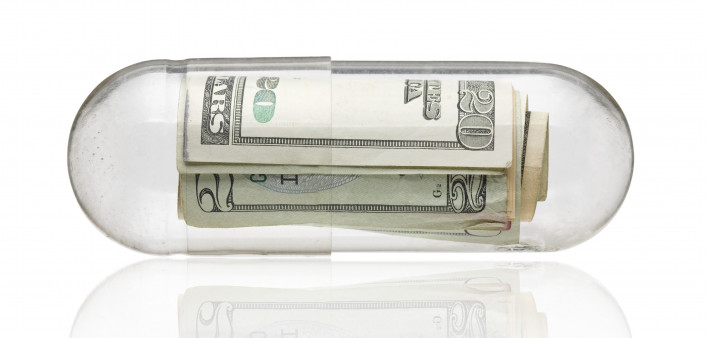The availability of generic Truvada (tenofovir disoproxil fumarate/emtricitabine, or TDF/FTC), the most popular HIV prevention pill in the country, for as little as $69 a bottle without insurance seems like it can’t be anything but good news—right? But according to a commentary published in Health Affairs, low-cost pre-exposure prophylaxis (PrEP) pills might actually amount to a funding cut for programs that help people overcome barriers to PrEP.
The issue isn’t the generics themselves, write Amy Killelea, JD, a policy consultant and former senior director of health systems and policy at the National Association of State and Territorial AIDS Directors (NASTAD), and NASTAD’s Tim Horn. It’s the way that public health in the United States has adapted to high drug prices by making them the cornerstone of funding for clinics and pharmacies that serve people with public or no insurance.
To see how this happens, first you have to understand the 340B Drug Pricing Program. Run by the Health Resources and Services Administration within the Department of Health and Human Services, the 340B program was designed to generate revenue for clinics and pharmacies working with mostly low-income U.S. residents. The program does this by requiring drug companies to provide their medicines at sometimes steeply discounted rates to these providers, while allowing the clinics and pharmacies themselves to charge Medicaid, Medicare and private insurance companies the full price for the drugs.
The difference between what the insurance agencies pay and what the drug costs the clinic or pharmacy creates an income stream that clinics can use for anything they want. Often, it’s used to create wraparound services, such as PrEP navigation, transportation support and social work support, for people whose priorities understandably are on survival, not clinic visits.
But when generic drugs become available, that funding stream may require clinics and pharmacies to do some uncomfortable calculus, which Killelea and Horn call “a perverse incentive for clinics to prefer high-cost drugs.”
“We are seeing that play out in real time as clinics and providers—in the midst of a full-court marketing press by Gilead Sciences and a need for funding to support innovative HIV prevention programs—make decisions about whether to prescribe Descovy or generic TDF/FTC,” write Killelea and Horn.
The solution is not to keep drug prices high, write the authors, but to fund public health and Ryan White clinics appropriately, without relying on arrangements with drug companies. This, the authors contend, “should be at the heart of any federal infrastructure investment”—presumably a reference to the American Jobs Plan put forth by the Biden administration.
“The federal government and foundations should be investing in pilots and innovative grant-making that more intentionally seek to identify and scale up models with diverse, dependable and robust funding streams,” they write. “This is particularly important in states without Medicaid expansion and with already strained systems of HIV care and prevention (that is, the South) who are sure to feel lost 340B savings more acutely and whose patients will suffer if a more sustainable path isn’t identified.”
Click here to read the full commentary.
Click here for more news about PrEP.







Comments
Comments